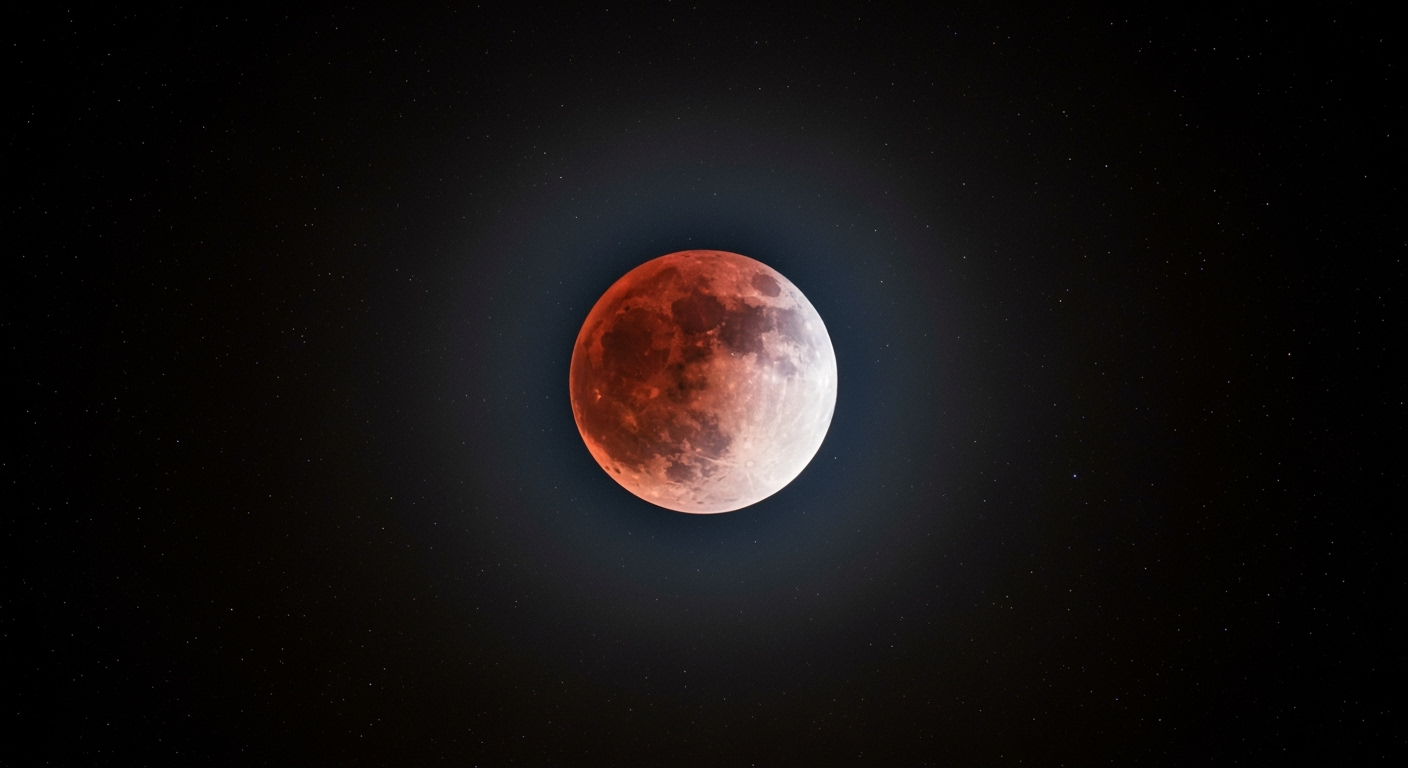Related Articles

The Hidden Danger: Unraveling the Complex Link Between Talc, Asbestos, and Cancer

The Hidden Sleep Divide: Why Women May Need More Rest Than Men





The night sky occasionally offers a breathtaking celestial spectacle, transforming the familiar silvery orb of the Moon into a dramatic, coppery-red beacon. This striking phenomenon, popularly known as a "Blood Moon," is the culmination of a total lunar eclipse, a precise cosmic alignment that has captivated humanity for millennia. Far from being an ominous sign, the crimson hue is a beautiful demonstration of basic physics and Earth's atmospheric properties at play.
A total lunar eclipse occurs when the Sun, Earth, and Moon align in a specific configuration, with Earth positioned directly between the Sun and the Moon. This alignment, which can only happen during a full moon, causes Earth to cast its shadow upon the lunar surface. However, not every full moon results in an eclipse. The Moon's orbit around Earth is tilted by about five degrees relative to Earth's orbit around the Sun, meaning the Moon usually passes slightly above or below Earth's shadow. A total lunar eclipse takes place only when the Moon, at its full phase, is near one of the two points where its orbit intersects Earth's orbital plane.
Earth casts two distinct shadows in space: the penumbra, a fainter outer shadow where Earth blocks only part of the Sun's light, and the umbra, a darker, inner cone where direct sunlight is completely blocked. A total lunar eclipse unfolds as the Moon gradually moves through these shadows. The event begins subtly as the Moon enters the penumbra, a phase often barely noticeable to the naked eye. The spectacle intensifies as the Moon begins to enter the umbra, initiating the partial eclipse phase where a dark, curved "bite" appears on the lunar disk. The true "Blood Moon" effect emerges when the Moon is fully immersed within Earth's umbral shadow, marking the onset of totality.
The vivid red or coppery color observed during a total lunar eclipse is not a mystical occurrence but a direct consequence of how Earth's atmosphere interacts with sunlight. Even when the Moon is entirely within Earth's darkest shadow, some sunlight still reaches its surface. This is because sunlight bends, or refracts, as it passes through Earth's atmosphere, effectively scattering around the edges of our planet.
The phenomenon responsible for this coloration is known as Rayleigh scattering, the same principle that makes Earth's sky appear blue and sunsets appear red. As sunlight enters Earth's atmosphere, shorter wavelengths of light, such as blue and violet, are scattered more efficiently by atmospheric particles. Longer wavelengths, like red and orange, are less affected and pass through the atmosphere more directly. These longer, redder wavelengths are then refracted or bent towards the Moon, illuminating it with a warm, reddish glow. It is as if all the world's sunrises and sunsets are simultaneously projected onto the lunar surface.
The exact shade of red can vary significantly, ranging from bright copper to deep, dark rust. This variation depends on the amount of dust, clouds, volcanic ash, and water droplets present in Earth's atmosphere at the time of the eclipse. For instance, a recent volcanic eruption could lead to a darker or more intense red. Astronomers use the Danjon scale to classify the brightness and color of total lunar eclipses, ranging from L0 (very dark, almost invisible) to L4 (very bright, copper-red or orange).
A total lunar eclipse is a progression through several distinct phases:
The entire process, from the first subtle penumbral contact to the complete emergence of the full moon, can span several hours. The period of totality, when the Moon is fully red, typically lasts anywhere from about 30 minutes to over an hour.
Unlike solar eclipses, which are visible only from a narrow path on Earth, a lunar eclipse can be observed from anywhere on the night side of the planet where the Moon is above the horizon. This widespread visibility makes lunar eclipses far more accessible. Furthermore, they are safe to view directly without any special eye protection, contrasting sharply with the stringent safety requirements for observing solar eclipses.
While lunar eclipses of all types occur approximately 2.4 times per year, total lunar eclipses are less frequent, happening about 0.7 times per year on average, or roughly once every 17 months. This makes each total lunar eclipse a cherished event for sky-watchers globally. The next notable total lunar eclipse, for instance, is anticipated for March 2-4, 2026, visible across parts of North and South America, Australia, New Zealand, and East Asia.
The "Blood Moon" is a profound reminder of the dynamic interplay between celestial bodies. It serves not only as a visually stunning event but also as an accessible lesson in astronomy, illustrating the elegant mechanics of our solar system and the intricate properties of Earth's atmosphere. Each fiery red appearance of the Moon is a testament to the predictable, yet endlessly fascinating, cosmic dance above our heads.